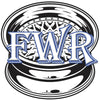As the seasons change and temperatures drop, you may notice an orange or yellow tire pressure warning light on your dashboard. For many drivers, this can cause immediate concern, but it’s a fairly common occurrence, especially during the colder months. Let’s take a closer look at why this happens, what it means for your vehicle, and how you can address it.
Why Does Cold Weather Affect Tire Pressure?
Tire pressure and temperature are closely related. Air, like most substances, expands when warm and contracts when cold. This basic principle is at the root of why your tire pressure light is more likely to come on as the weather cools.
Tires are typically inflated to a specific pressure measured in pounds per square inch (PSI). When temperatures drop, the air molecules inside your tires compress, leading to a reduction in tire pressure. For every 10°F decrease in temperature, tire pressure drops by about 1-2 PSI. This might not seem like much, but even a slight decrease can trigger the tire pressure monitoring system (TPMS), especially if your tires were already close to the lower threshold of recommended PSI.
The Importance of Proper Tire Pressure
Tire pressure isn’t just about comfort; it plays a critical role in vehicle safety, performance, and fuel efficiency. Underinflated tires can lead to several issues, including:
- Reduced fuel efficiency: Low tire pressure increases rolling resistance, which forces your engine to work harder and consume more fuel.
- Increased tire wear: Underinflated tires can wear unevenly, reducing their lifespan and requiring premature replacement.
- Poor handling: A vehicle with underinflated tires may not handle as well, especially on wet or icy roads, which can increase the risk of accidents.
- Increased stopping distance: Properly inflated tires help maintain optimal contact with the road, which is vital for braking performance.
This is why it’s essential to address a tire pressure warning light immediately, even if it appears to be caused by cold weather.
What to Do When the Tire Pressure Light Comes On
When your tire pressure warning light comes on, follow these steps:
-
Check the Tire Pressure: Use a tire pressure gauge to measure the pressure in all four tires, including the spare. Compare the readings to the manufacturer’s recommended PSI, which can be found in your vehicle’s owner’s manual or on a sticker inside the driver’s side door.
-
Inflate the Tires: If any of your tires are below the recommended PSI, inflate them to the correct level. This can often be done at a local gas station or with a portable air compressor.
-
Reset the TPMS: After adjusting the tire pressure, the warning light should go off on its own once the system detects that the tires are properly inflated. If it doesn’t, refer to your owner’s manual for instructions on manually resetting the TPMS.
-
Monitor Tire Pressure Regularly: Tire pressure fluctuates with temperature, so it’s a good idea to check it regularly during the colder months. Aim to do so at least once a month, or more frequently if the temperatures are particularly low.
Preventing Future Tire Pressure Warnings
To minimize the frequency of the tire pressure warning light coming on during cold weather, consider the following preventative steps:
- Pre-season tire check: Before temperatures drop, have your tires inspected and inflated to the proper pressure.
- Add extra PSI: Some drivers opt to inflate their tires slightly above the recommended pressure (1-2 PSI) before winter to compensate for the expected drop in pressure.
- Switch to winter tires: Winter tires are designed to perform better in cold temperatures and may help maintain tire pressure more effectively during the colder months.
When to Seek Professional Help
If your tire pressure light remains on even after adjusting the pressure, it could indicate a more serious issue, such as a slow leak or a faulty TPMS sensor. In this case, it’s best to consult a professional mechanic or tire specialist to avoid potential safety hazards.
Conclusion
Seeing the tire pressure warning light come on during cold weather is common and typically not a cause for immediate concern. However, maintaining the correct tire pressure is essential for your safety, vehicle performance, and fuel efficiency. By staying proactive and regularly checking your tire pressure, especially in colder months, you can ensure your vehicle remains in top shape regardless of the season.




